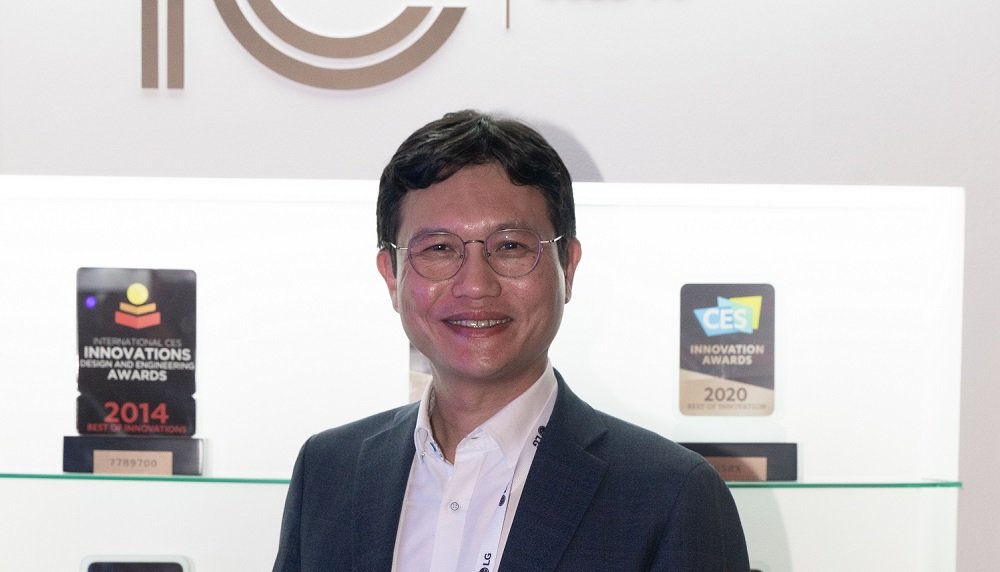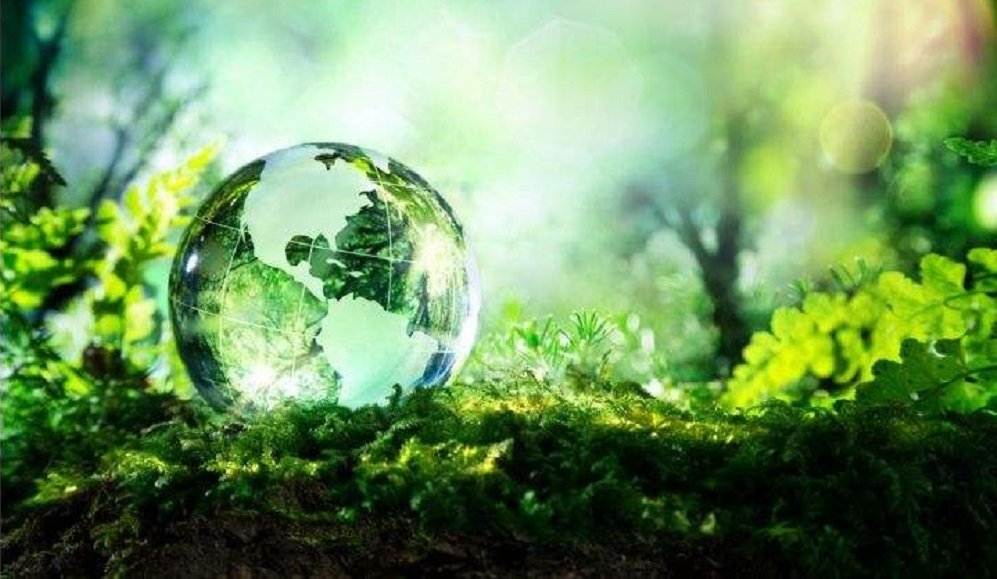With a vision of creating awareness about environmental protection around this year’s World Environment Day theme – #BeatPlasticPollution tech leaders in the MEA shares their perspectives on how to improve our relationship with nature and protect the planet we inhabit together by leveraging technology.
World Environment Day is observed on the 5th of June every year to encourage worldwide awareness and action to protect our environment. “World Environment Day holds significant importance for LG as it aligns with our commitment to sustainability and environmental responsibility. It is a day when we reflect on the state of our planet and reiterate our dedication to preserving and protecting it. World Environment Day serves as a reminder for us to evaluate our practices, develop innovative solutions, and promote sustainable development,” says Kim Sa Nyoung, President of LG Electronics Gulf.
In recent years sustainability has moved swiftly up the executive agenda in recent years. This is so because realization has come down that apart from protecting people and the planet, businesses with a higher sustainability performance perform better financially than their peers.
Businesses across the Middle East are looking at ways to reduce their carbon footprints to accelerate their sustainability agendas.

53.6 million Metric tonnes
A record 53.6 million metric tonnes (Mt) of e-waste – discarded products with a battery or plug such as computers and mobile phones – is reported generated worldwide in 2019, up 9.2 Mt in five years. This E-waste production is going to rise in years to come as more and more people are buying electronic equipments. “Global e-waste generation is a mounting problem, which reached a record high of 53.6 million metric tonnes in 2019, an increase of 21% in just five years,” says Sanmeet Singh Kochhar, Vice President -India & MENA at HMD Global, an environmentally conscious brand recognized by the sustainability rating agency EcoVadis.
HMD Global, which produces Nokia phones, is committed to a science-based approach to reducing greenhouse gas emissions across its entire business. “We’re aiming for a 50% greenhouse gas emission reduction by 2030, and to reach Net Zero by 2050,” adds Kochhar. He says, “With electronic products, such as smartphones, becoming even more affordable, the amount of e-waste generated is growing very rapidly.”

“World Environment Day holds significant meaning for our company as respecting the earth and ensuring a greener future form a core part of our business strategy,” says Michele Montecchio – General Manager, Acer Middle East. He adds, “The Acer Group has made ambitious commitments, pledging to source 100% renewable electricity by 2035, achieve net zero by 2050, and use 20-30% PCR plastics in its computers and displays by 2025. Our Vero business, which focuses on recycled materials, witnessed an impressive growth of 41.3% Quarter on Quarter in Q4’22 revenue.”
2023 World Environment Day Theme
The theme for World Environment Day on 5 June 2023 will focus on solutions to plastic pollution under the campaign #BeatPlasticPollution. “This year’s theme of beating plastic pollution serves as a reminder for businesses to take action and adopt circular practices. With earth’s natural resources being depleted at an alarming rate, nearly twice as fast as the planet can replenish them , taking action to combat climate change has never been more important, “says Ertug Ayik, MD Middle east and Africa, HP.

Why the Circular Economy is Gaining Momentum
The circular economy is gaining momentum. There has been great progress as businesses are committing to various sustainability goals, such as reducing emissions.
Reducing the environmental impact of IT hardware production plays a crucial role in the path towards developing a circular economy.
LG, which has committed to becoming carbon neutral by 2030, is building a circular economy through waste recycling initiatives and improving waste treatment processes and aims to recycle 95% of waste generated at its production sites by 2030. “We project that, from 2021 to 2030, we will have used an accumulated total of 600,000 tons of recycled plastics in the production of new home appliances. Through this commitment, LG aims to increase high-quality recycling and thereby push towards a circular economy in the electronics industry,” says Kim Sa Nyoung of LG Electronics Gulf.
As an advocate for circular economies, Acer introduced the Vero line of eco-conscious devices that utilize recycled plastic, recyclable packaging, and ocean-bound plastic. The company’s commitment to sustainability has been recognized on numerous occasions. For three consecutive years, it has been named in the S&P Global Sustainability Yearbook.

In January 2023, Lenovo announced its commitment to achieving net-zero greenhouse gas emissions by 2050, with science-based targets validated through the Science Based Targets initiative’s Net-Zero Standard. “At Lenovo, we are reducing the environmental impact of our products throughout their entire lifecycle, from purchase to disposal,” says Thibault Dousson, Services and Solution Lead, Lenovo META. “We are investing in environmentally sustainable business practices, product designs, and services, fostering a more circular economy, driving out waste across the value chain, reducing the usage of virgin materials in products, focusing on renewables and always maintaining rigorous supplier standards.”
“Our environmental initiatives are built on the twin pillars of responsibility and contribution. Aligned with our Road to Zero environmental goals, we aim to achieve net-zero greenhouse gas emissions by 2040, earlier than our previous target of 2050, and operate with 100% renewable electricity by 2030, instead of 2040,” says Jobin Joejoe, Deputy Managing Director, Sony Middle East and Africa.

e-waste policy
The IT industry creates a lot of waste. This is known as electronic waste or E-waste. E-Waste (or Electronic Waste) is a term used to describe abandoned electrical and electronic items such as computers and their peripherals, household appliances, audio and video equipment, and so on. The major issue with E-waste is that it contains heavy metals like lead, cadmium and beryllium is huge quantities. These elements pose a threat to ecological balance, without proper e-waste management system, these electronic parts/gadgets find their way to open landfill.
“We prioritize minimizing the environmental impact of electronic waste through circularity and waste reduction,” says HP’s Ertug Ayik.
Jobin Joejoe, Deputy Managing Director, Sony Middle East and Africa, says, “Reduce, reuse, and recycle are the three pillars of our e-waste program. Our internally developed recycled material SORPLAS delivers high performance, to match both our product design and quality reputation. In 2020, we reached a 99% recycling rate for our waste products through this initiative.”
Sustainability is now a major factor in decision-making. According to the World Economic Forum, e-waste will be the fastest growing waste stream in the world. “E-waste has been reported as the fastest growing waste stream and poses challenges because of the expense and complexity of treating it in a way that is environmentally friendly,” adds Thibault Dousson, Services and Solution Lead, Lenovo META.
“The biggest impact to reducing e-waste is not to have it,” says Althea Ricketts, VP of Corporate Initiatives at Shure. “We design our products to last for years – or to be upgraded to fit the next evolution of technology – so that devices that need to be discarded are heavily minimized. We also have a dedicated service center that helps renew products to keep them in circulation to avoid landfills. Many of our “used” equipment is recycled and donated to community organizations who put them to good use.”

Sustainability Efforts
As part of its overall sustainability initiatives, Shure is improving its packaging to be even more environmentally friendly. “Shure has embarked on an aggressive initiative to improve sustainable packaging. New products will be packaged using 75 percent recyclable and/or renewable materials in 2023,” says Althea Ricketts, VP of Corporate Initiatives at Shure.
Governments across the Middle East have introduced a variety of initiatives that encourage companies to implement sustainable practices. Acer’s Michele Montecchio says, “The UAE Vision 2031, for example, aims to make the country a world leader in creating a green economy for sustainable development and a center for the export and re-export of green products and technologies.
As part of its sustainability initiatives, Western Digital has created an Easy Recycle program for customers which will safely dispose NAS systems, internal and external HDDs and SSDs, from any manufacturer. “Customers can simply apply for the program and ship their devices after which they will get a discount code for their next purchase. All data will be destroyed, and the device will be shredded and recycled to ensure they are not dumped in landfills. The end result from this is that we have zero electronic waste in landfills. As a result, 26,000 drives have been recycled since April 2020 and 11.43 metric tons diverted from landfills,” says Mohammed Owais, Sales Director for Middle East at Western Digital.

“Governments in the region have taken significant steps to drive the adoption of sustainable practices, says Kim Sa Nyoung, President of LG Electronics Gulf. “For instance, UAE initiatives include the UAE Vision 2031, which sets goals for sustainable development, and the UAE Energy Strategy 2050, which aims to achieve 50% clean energy usage by 2050. By creating a supportive regulatory framework, governments can accelerate the transition towards a greener economy and encourage consumers and businesses to prioritize environment-friendly choices.”
The GCC governments have shown the way to a decarbonised future. Saudi Arabia, home to the world’s second-largest oil reserves, has set an ambitious target to reach net zero emissions by 2060. The UAE Net Zero by 2050 strategic initiative aims to achieve net-zero emissions by 2050, making it the first Middle East and North Africa (MENA) nation to do so.
“Governments in the region play a vital role in driving the adoption of environmentally friendly products,” says Ertug Ayik, MD Middle East and Africa, HP. “By implementing regulations that incentivize sustainability, such as offering incentives for eco-friendly products, setting carbon emissions reduction targets, or employing sustainable procurement policies, governments can encourage businesses to prioritize sustainability. This, in turn, will influence consumer choices and contribute to more sustainable products in the market.”

Mohammed Owais of Western Digital, says “Governments in the region should actively enact and enforce regulations that prioritize and incentivize the production of environmentally friendly products with a set standard for emission, energy efficiency and waste management policies.”
“Regionally, we collaborate with Emirates Environment Group (EEG) for various local environmental conservation initiative,” says Jobin Joejoe, Deputy Managing Director, Sony Middle East and Africa. “In 2022, Sony MEA employees along with their families united and contributed to the Sony MEA Paper and Mobile Phone Waste Collection Campaign, successfully collecting 2,230 kg of paper and 90 used and defective mobile phones for recycling.”
Technology is—and will continue to be—the fundamental driver of sustainability for organizations. There are clear benefits to harnessing technology to drive sustainability. As a matter of fact businesses that adopt sustainable technology to a significant extent achieve 4% higher ESG scores on the Arabesque S-Ray dataset—a global specialist in measuring ESG metrics—than those that do not. This can translate into an 11% jump in their ESG ranking. And between 2013 and 2020, companies with consistently high ESG performance tended to generate 2.6-times higher total shareholder returns, compared to those with mid-range ESG scores.











